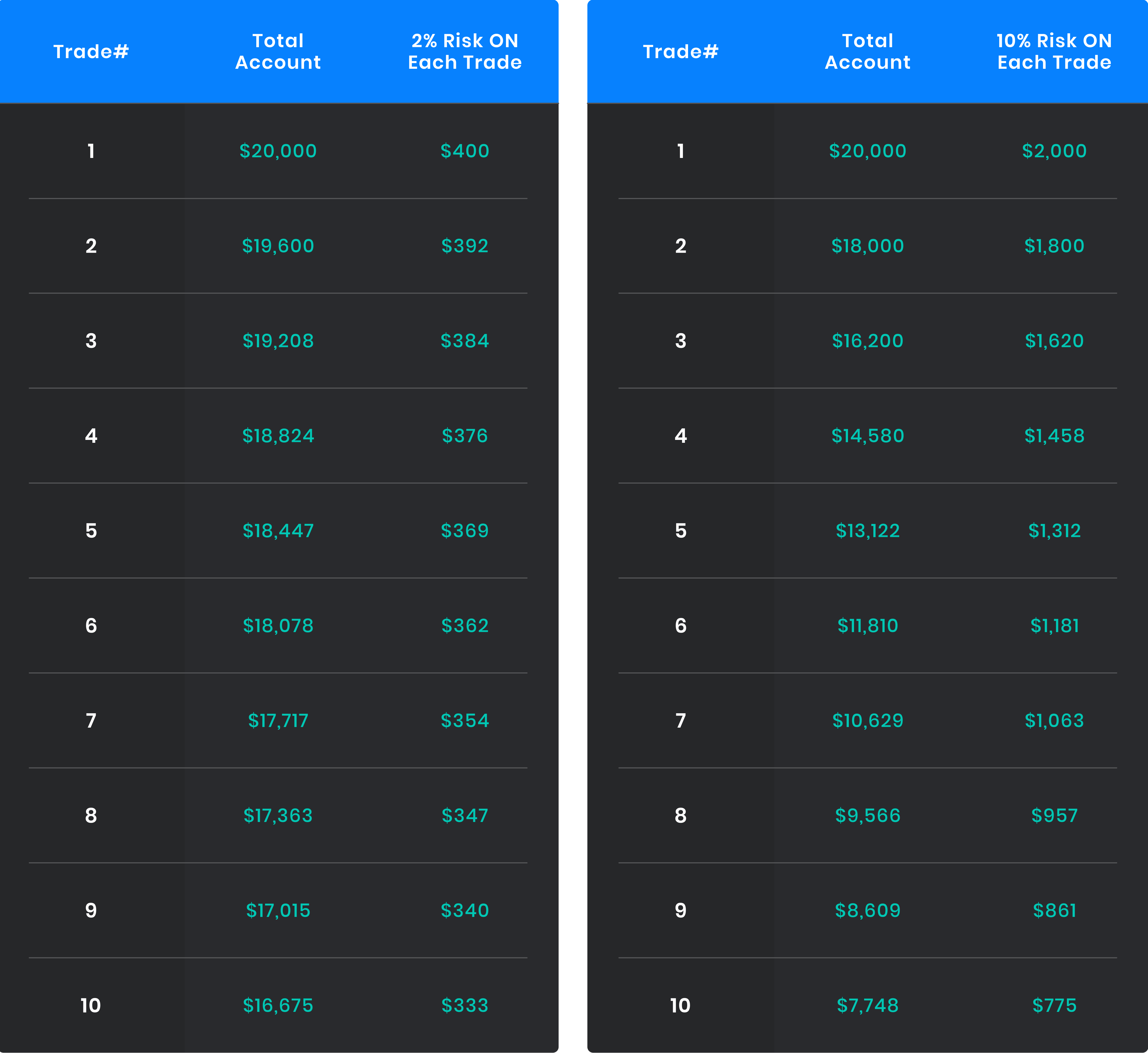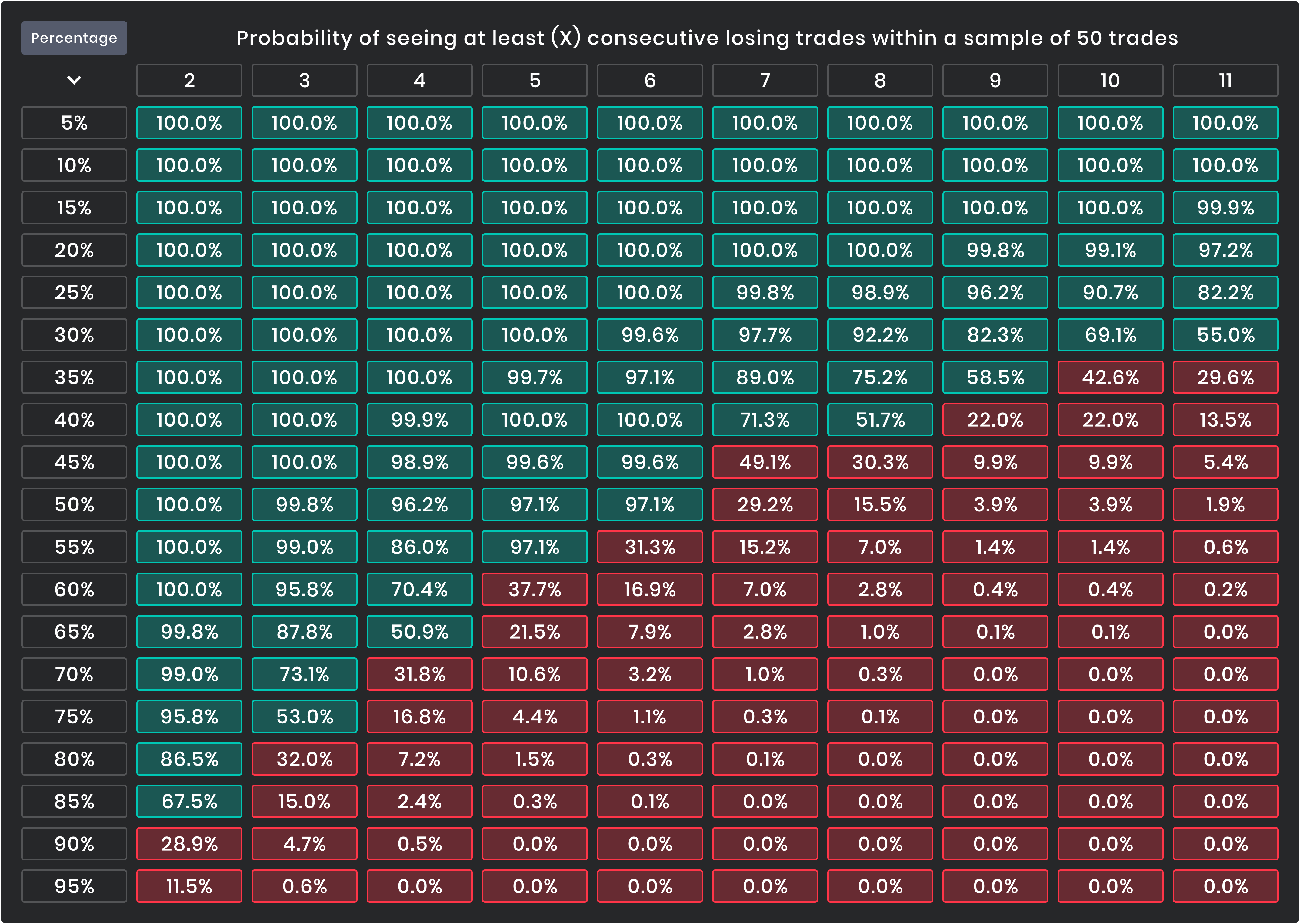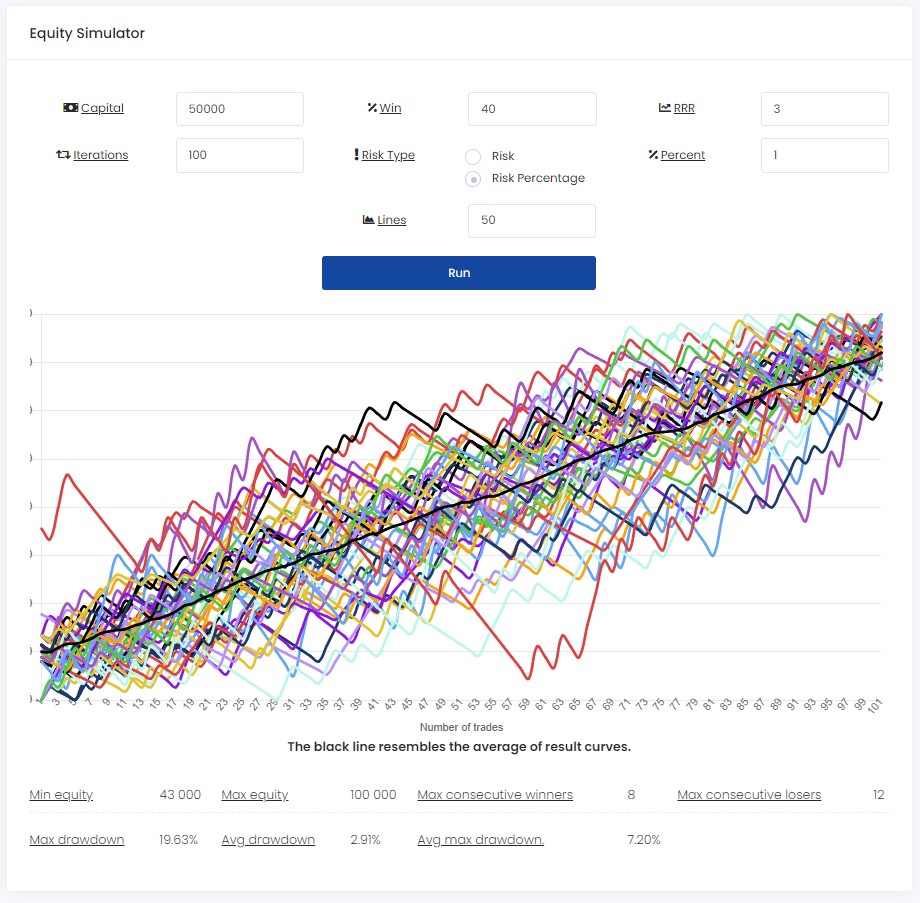Risk management
It goes without saying that risk management is the most important part of trading. Although most traders think they are losing money in trading because of flaws in their trading strategy, the truth is that in most cases they are not using proper risk management. In this article, we will cover everything you need to know about risk management in trading and how you can become a better trader.
Risk management
Proper risk management in trading is what separates it from gambling. Even though we can never be sure of what markets are going to do next, by using proper risk management, we can cover our potential losses and aim for wins that will make us profitable in the long run.
Undercapitalization
The first and biggest problem of bad risk management is undercapitalization. Because many brokerage firms offer deposits as small as $50, many traders come into trading with $1,000 and think they can double or triple their capital very quickly. This leads to opening too big of positions where a short losing streak can cost them a whole trading account. At FTMO, we are well aware of this and that’s why we provide traders an initial balance of up to $200,000. This way, we can keep our risk per trade very small while still potentially achieving large gains.
Risk per trade
How much should we be risking per one trade? In most textbooks and online education programs, we can learn that we should not be risking more than 2% per one trade. Although the answer to this is more complicated, let’s start by saying that 2% risk per trade is a good base to start with. As we can see from the below chart, keeping our risk at 2% per trade would only cost us approximately 20% of our account on 10 consecutive losses which should not happen in the first place for traders with robust trading strategy.

However, if we decide to risk 10% per trade we would be down over 60%, and that would be a deep hole to dig ourselves out of.

As we can see above, the percentage required to go back to break even, as calculated from the remaining balance, can be dangerously huge. Making 25% of our account back is not easy but it is still doable compared to the 150% required to break even after a 60% drawdown. Risk should differ based on strategy because there are no two organic traders with the same trading style. If we are a scalper or day trader who takes 5 trades every single day, should we risk 2% per trade? Absolutely not. With this amount of trades, risking 2% is simply too much as we can experience large drawdowns very quickly. Daytraders and scalpers usually risk only 0.5-1% per trade. On the other hand, if we are a swing trader who only takes 1-2 trades per week, the 2% risk might be too small. If we know that the next trade will come up in a few days, we can probably bump our risk a little. But we must not go too crazy, in general, the rule of thumb is that the risk per trade should not be over 5%, an exception to this could be if we are taking a long term investment.
Drawdowns
We all hate them but the truth is they are inevitable in trading and we must be well prepared for them.

As we can see in the above table, if we have a trading strategy with a 60% probability win rate, there is still a 70% chance we will get four consecutive losses in a row. But things can be even more drastic if we are the type of trader with a 40% win rate, there is over 50% chance that we will have 8 consecutive losses in a row. Does that mean we cannot be profitable? Absolutely not! As we can see from our equity simulator, there is no single occasion from 50 different simulations that we would end up with a negative balance after 100 trades.

From all the projected simulations, the highest number of consecutive losses could be 12 and this brings an important question we should ask ourselves: Are we able to sustain 12 losses in a row? This is something we have to take into consideration when we are building our trade plan. It is not an easy process, but once we finish it, we will know exactly what to expect from our trading strategy.
Reward to risk ratio
The last piece of the puzzle is the reward to risk ratio. The reward to risk ratio tells us how much we win compared to our risk. If we are taking the trade with a 3:1 reward to risk ratio, it means that for every $100 of our risk we aim a potential reward of $300.

This chart shows the sequence of 10 trades with a 50% of win rate and random distribution of wins and losses. As we can see, although we won only 50% of the time, we still ended up with a $10,000 gain. In real trading, things are not always that easy, as we might not get a fixed 3:1 reward to risk ratio for every trade. In general, taking trades under the 1:1 reward to risk ratio can be quite tricky as we are essentially losing more than we are winning. Because of that, our system would need to compensate for it with a very high win rate.
Another important factor with our reward to risk ratio, which we have to realize is how we manage our winners. If we are taking a trade with 2:1 RRR but decide to close half of our position once we are at 1R profit and then close the rest at 2R, our win is only 1.5R instead of 2.
To practice this notion, we take a trade with $200 risk and $400 gain, at $200 unrealized PnL we close half of our position which is $100, the rest of our position is closed at that 2R target but instead of $400, it is only $200. As we can see, we have won $300 instead of $400 which equals to a 1.5R instead of the original 2. This scaling out of trades can turn against us once we hit a streak of consecutive losses as our prior wins were not that significant.
Unexpected risks
The last thing in the risk category is risks that very few traders think about. These are risks that we really do not expect to happen, but they still can occur. Unexpected news releases, gap risks with holding positions during the market close, internet disruptions in the middle of the trade, psychology and other factors can come to us at any time of the day. That is why we should always be prepared for them and have a plan for what to do once they happen.




